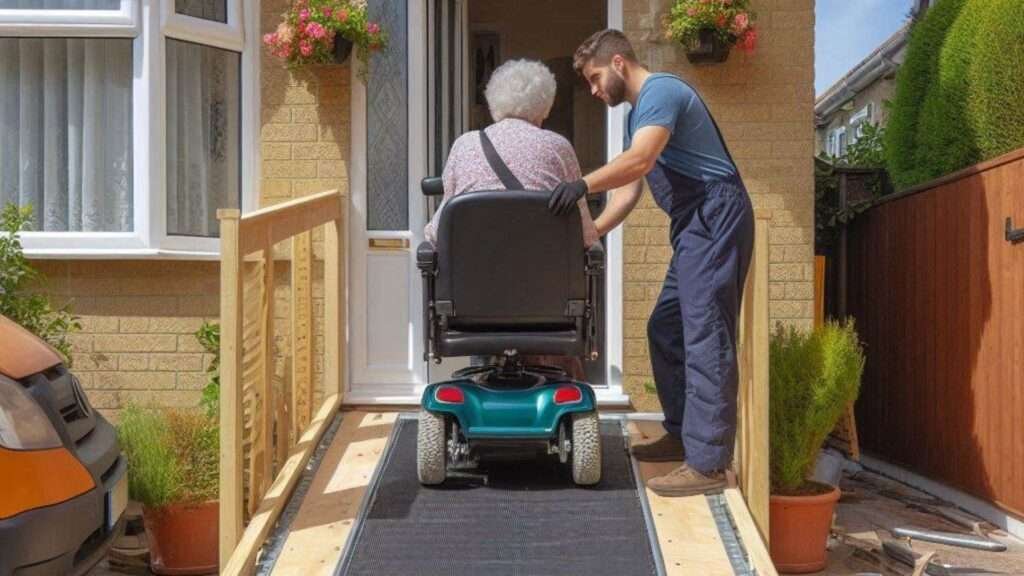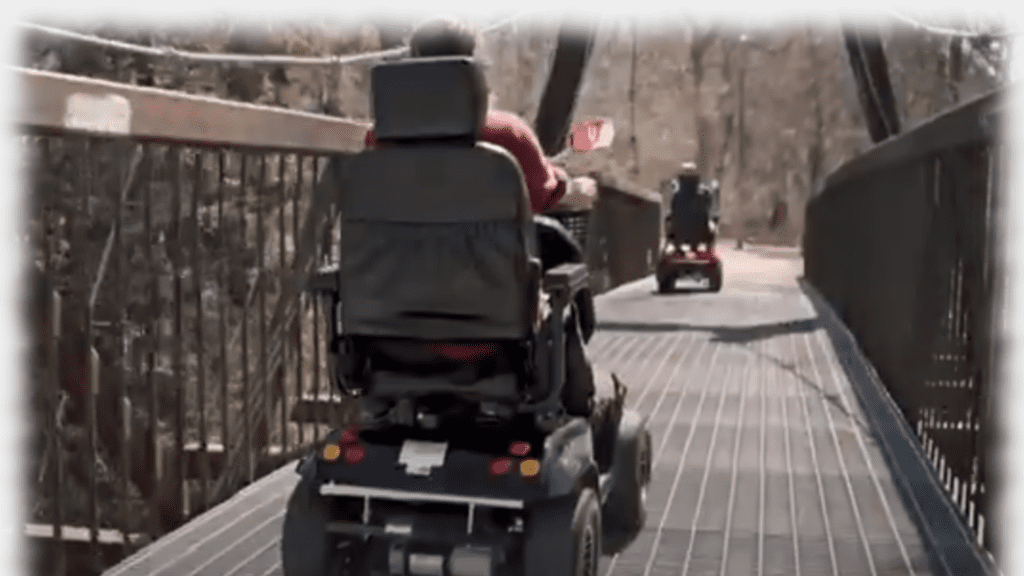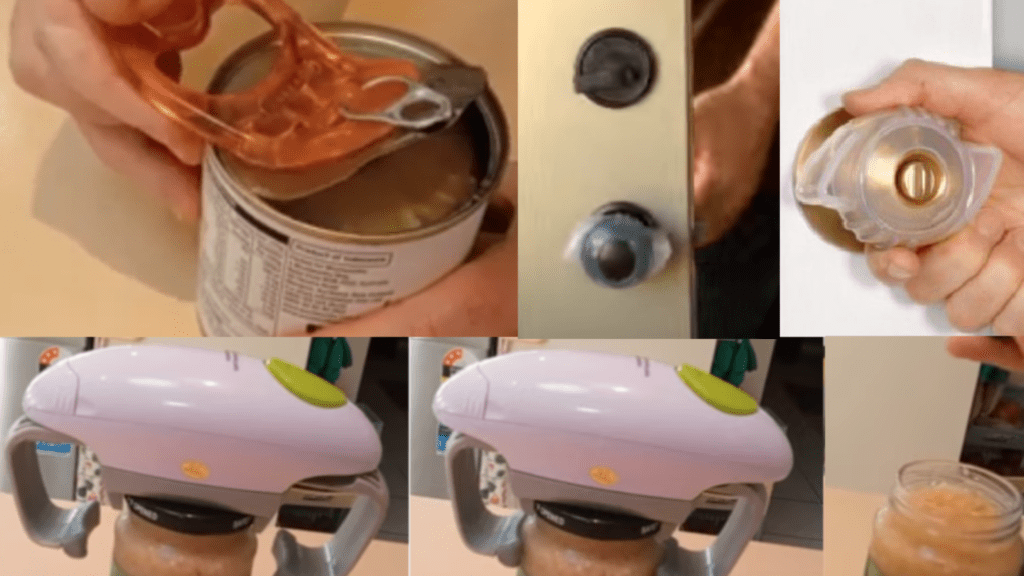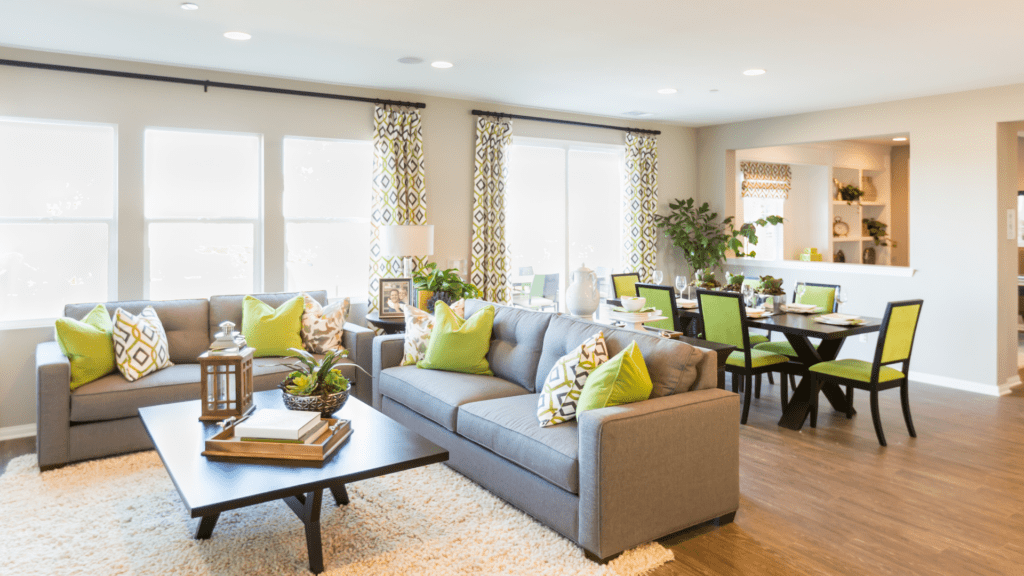A Guide For Improving Safe Access At Your Home.
Improving access to your home and around your home becomes critically important when we’re a little older.
Whereas a lot of people will recognise the importance of a wheelchair ramp, there are a plethora of considerations that must be reviewed and actioned for making your home completely safe.
Getting a Wheelchair Ramp Installed At Entry/Exit Points.
The term “wheelchair ramp” refers to any specially constructed inclined ramp that is installed at a person’s home in addition to or instead of a set of stairs.
These ramps allow wheelchairs, mobility scooters, and wheeled walkers to safely access their homes.
Wheelchair ramps are generally intended to make entry and exit at designated points of homes easier and safer for people with mobility issues.
A wheelchair ramp will be built or installed so that using stairs to enter or exit your home is no longer an option.
Wheelchair ramps have come a long way over the years, and they are now more of a quality feature of a home than a noticeable difference from your neighbour’s.
Wheelchair ramps can be installed or applied to your home in a variety of ways, depending on the style of your home and your budget.
The more affluent among us may hire an architect to design the wheelchair ramp installation to ensure it blends in with the aesthetic of the home.
I believe that such an addition would increase the value of the home and makes me wonder why more homes are not built from the ground up with wheelchair/scooter type access ramps included; it would undoubtedly increase the appeal of a home when it comes time to sell.
After all, there are undoubtedly many wealthy people out there who have only recently encountered the need to modify their existing home or purchase a home that already has wheelchair/scooter/walker access ramps built in.
You’ve probably seen some beautifully crafted custom designed timber wheelchair ramps and rails, just like me.
They provide a stunning access option to a home that can be seamlessly integrated into the original home structure.
You can also buy portable fibreglass and carbon fibre ramps, which are both strong and lightweight. Anti-slip/grip enhancing surfaces and raised edges are standard features on these types of ramps.
This access ramp option is popular when commissioning a permanent ramp is either impractical or prohibitively expensive.
Access ramps made of aluminium are also very popular because they are typically of high quality, lightweight, and strong. Access ramps made of aluminium are suitable for mobility scooters and powered wheelchairs and can be made to your specifications. Aluminium wheelchair access ramps can be either a fixed or portable fixture.
Before installing a ramp, the user and the users needs are the first thing you should take into account. You need to know what type of mobility aid/equipment will be used on the ramp now and possibly in the future.
The engineering calculations & other build criteria will be influenced by the total weight and dimensions of the machinery that will be using the ramp.
For instance, will the access ramp need to be strong enough to a couple that are both using mobility scooters?
Will there be a need for the ramp to support the weight of 2 large mobility scooters at the one time?
Making a decision on the type of ramp to use ahead of time can save you a lot of money in the long run.
Building a future-proof ramp now is preferable to building a more robust construction ramp in 5 years.
Another consideration is where you want to place the ramp.
When planning the ramp to be installed at the front, back, or side entrances of your home, consider the area around the specific entrance/exit point to determine whether a straight ramp, a 90-degree ramp, or a switchback ramp will be required.
Uneven Concrete Or Paved Surfaces Can Be Dangerous.
Uneven concrete surfaces can cause nasty trips or falls, which can result in devastating bad injuries for the elderly.
All too often, we’ll notice uneven concrete surfaces and think to ourselves that we really should get that fixed one day.
The only problem is that you have no idea how or why the concrete has become uneven, and as a result, you have no idea how badly this will progress over time if you do not act quickly.
Whether you’ve discovered this hazardous situation on your driveway or along a footpath that runs down the side of your house at your outdoor entertainment area, these hazards should be addressed as soon as possible.
Aside from the pain and suffering you or a family member may experience as a result of tripping over these hazards, the last thing you probably want from a visitor to your home is for them to sue you because they tripped, fell and badly hurt themselves.
You end up being exposed legally from failing to fix a known dangerous trip hazard.
There are a few options for repairing uneven concrete at home. In the worst-case scenario, you may have to replace the uneven slabs.
It’s an expensive option, but it’s sometimes unavoidable. The old concrete will be broken up and hauled away, and new slabs will be poured to sit evenly with your old concrete. You’ll need to avoid that area for about a month while it hardens completely.
There’s a chance you’ll be able to level the uneven slabs that have sunk down on one side by lifting them.
Concrete levelling is the process by which contractors drill holes in specific areas of the slab and then inject a special compound such as polyurethane foam or stone slurry grout into the ground beneath the slab, slowly lifting the slab up as the compound fills up the area beneath.
It will eventually lift the problem area of the slab enough for it to sit comfortably in place even with the rest of the concreted areas. The compound will harden over time and become a very strong new foundation for the slab to sit on.
If the concrete is only slightly uneven, a quick and easy way to eliminate trip hazards is to grind down the affected area until it is in line with the adjacent slabs and safe.
This is done with a concrete grinder, which is an abrasive tool with a diamond attachment. The concrete grinder will level and flatten the problem surfaces, and if you’re lucky, you can have the problem resolved on the same day you notice it.
You will notice where concrete grinding has occurred, and because it exposes the pores of the concrete to the elements and thins it out slightly, there may be additional issues with that concrete later on.
However, the concrete grinding does not address any underlying issues. For example, if a tree root is pushing up under the slab and the tree is relatively young, you can almost guarantee that this situation will be revisited in the future.
The best thing you can do, in my opinion, is to properly analyse the situation and develop a plan that keeps you safe today and may include more extensive and expensive work later on, but at the very least you will have the opportunity to rehash your budget and save up for the larger job later on.
Avoid Slipping On Wet Bathroom Floors.
No matter your age, slippery bathroom floors are a nightmare. You wouldn’t want even your worst enemy to slip and fall as they exit the shower and onto the wet bathroom floor.
The problem can be made worse by the soapiness of the water on the floor and the smoothness of the tiled surfaces. Unfortunately, this hazard is all too common in bathrooms.
While we frequently have the shower recess floor finished to a non-slip standard, occasionally we forget or don’t fully understand the importance of having the bathroom floor treated similarly.
There are numerous ways to make your bathroom less slippery and protect yourself and your loved ones from harm.
Although tiled bathroom floors look lovely, they must be coated with an anti-slip material or covered with non-slip mats.
The simplest and least expensive way to prevent slipping on a wet bathroom floor is to get a few anti-slip mats.
However, it’s unlikely that you’ll be covering the entire bathroom floor and completely protecting yourself unless you’re purchasing a sizable number of them.
The best and most durable solution is to have a professional apply an anti-slip compound or treatment to your tiles. This solution covers the entire bathroom floor surface and is long-lasting.
Floor grip mats, which are typically made of rubber, vinyl, or plastic, do help prevent trips and slips in the bathroom.
Floor grip mats typically have a lot of suction cups on the underside that adhere to the bathroom floor surface. These mats typically have a textured finish on top, which gives you a lot of grip so you can stand safely.
In my opinion, floor grip mats should be used as a doubly sure method to ensure safety in the bathroom, even if your tiled bathroom floor surface has an anti-slip treatment. They are a low-cost, straightforward way to prevent slipping on a wet bathroom floor and are incredibly effective.
Consider Purchasing A Walk In Bathtub.
If you are like a lot of senior people I know, at some point you stop loving the idea of trying to either get in or out of a traditional bath tub due to safety reasons.
Although there’s nothing quite like relaxing in a warm bath after a hard day, if your current health, strength or mobility situation makes the standard bath situation a no-go zone, then this can be disappointing.
However, You might be pleasantly surprised that traditional bathtubs are not where the bath possibilities stop for those aged over 70 years old.
The reason I say this is because you can now purchase and have installed an incredibly awesome walk-in bath tub. You are not dreaming, this is real and they are amazing.
Walk-in tubs feature an access door and a seat. This is what makes them safe. You enter the walk-in tub through the door, sit on the seat, close the door and then fill it up with beautiful warm water.
Walk-in bath tubs should have been around many years ago in my opinion, it’s not as though the design is space age.
Walk-in tubs are like a mini spa that is designed for one person and can fit neatly inside a person’s bathroom.
The incredibly safe design, the way they lessen the strain on our body and make it incredibly easy to have a proper bath, not matter your age, makes walk-in tubs something that should be standard for all homes.
For my mind, each new home built beyond today should have a normal bath tub, a walk-in bath tub and a shower.
Make Your Shower A Safer Place.
Stepping into and out of a shower can be hazardous for seniors who have mobility, leg strength/stability, or balance issues.
You should at the very least have the shower recess floor treated with a non-slip compound/treatment.
By placing a non-slip mat on the shower floor, you can add another layer of slip prevention to the showering experience.
In the shower, a flexible handheld shower wand reduces unnecessary movement. The traditional shower requires you to move around in the shower to get clean, whereas the shower wand requires you to stand still and let the wand do all of the work.
There is less risk of slipping and less strain on your body because there is less movement. They usually have gentler spray patterns and this is great for people with sensitive paper thin skin.
Install a shower water thermostat that has a lower temperature output.
Some countries have plumbing regulations that require a maximum temperature of 50 degrees Celsius for each shower, basin, or bath outlet in the home.
However, there’s no reason you can’t have a thermostat dedicated to the shower turned down to ensure only lower temperature water gets through to avoid and trouble due to your skin sensitivity.
A shower seat is also a good idea because some people find it difficult to stand and maintain balance in the shower for long periods of time.
By purchasing and installing a shower seat, you eliminate the need to stand in the shower for any longer than necessary. The shower seat can reduce the risk of a shower fall by preserving your leg strength.
Grab bars are well-known for assisting people in staying upright in potentially slippery, commonly wet areas of the home such as the bathroom and in particular the shower recess.
Grab bars offer safety by providing something secure to grab onto and maintain your balance and sturdiness when entering and exiting the shower.
Dealing with slippery moss on your outside concrete.
Moss on concrete paths and entertainment areas around your home not only looks bad, but it can also be a dangerous slip and trip hazard.
Baking soda sprinkled over the moss-covered area works well, but only on dry hot days. After covering the affected area with baking soda, leave it for 20-28 hours before sweeping away what remains the next day.
Pressure washers are one of the quickest ways to remove moss from concrete surfaces. The high-pressure water simply blasts away the bothersome moss and dirt, leaving your concrete clean and much safer to walk on.
You could also try the age-old method of pouring boiling hot water over the mossy area. Naturally, you must exercise extreme caution to avoid burning yourself in the process.
Boiling water alone will not do the trick; you will need to scrub the area with a stiff brush/broom to remove all of it, and then hose off the area once you’re finished to leave it clean.
If you have stubborn moss marks on your concrete after cleaning it, use a spray bottle to clean them off with a 50/50 white vinegar/water solution. It is very effective at removing problematic moss stains on concrete and is very cost effective.











